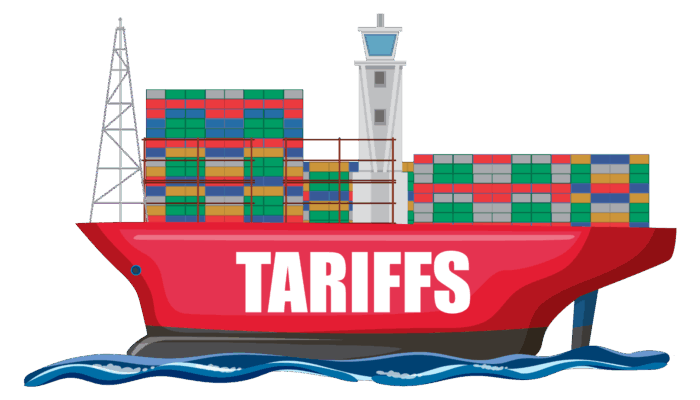With the rise of digital marketplaces like Amazon, fulfillment has grown more complex. Where there used to be only two ways to fulfill products (ship from warehouse, buy in store) there are now dozens. This includes popular delivery strategies like Click and Collect and Ship from Store as well as Drop Ship Vendors (DSVs), lockers, and other third party collection points. Real-time inventory visibility is key.
But while a study published in RIS News revealed that 72% of retailers agree omnichannel inventory management is a major factor in meeting their company’s financial goals, many struggle. Why?
A key problem faced by today’s retailers is that legacy ecommerce platforms and ERPs weren’t built to handle real-time inventory changes flowing from multiple sources. For instance, systems like ERPs usually update 1-2 times a day at most. Let’s look at how legacy systems fail at real-time inventory and why—as well as potential solutions.
1. No unified real-time view of inventory across multiple ERP or POS systems
For many retailers, every stock point is controlled by a separate software. This is sometimes the result of mergers and acquisitions; other times it’s the result of the expense it would cost to re-architect the system. Although an ERP may have a general view of stock availability, it usually can’t “talk” to the Point of Sale (POS) system or other points of fulfillment in the ecosystem. Therefore, retailers never know exactly what inventory they have, where it is, or whether it’s available to sell.
That’s where an Order Management System (OMS) comes in. OMSs are purpose built to receive inventory feeds from multiple systems, such as ERPs, POSs, Warehouse Management Systems (WMS) and eCommerce platforms, and keep that data in sync. This means you have a unified view of what you have Available to Sell (ATS) across all your locations.
What’s more, an OMS can take inventory feeds from third parties too, such as suppliers and Drop Ship Vendors (DSVs), so you’re not limited by what you have on-hand. In short, you can expand what you have available to sell.
2. Underselling inventory
A lack of a unified view of inventory can result in lost opportunities to sell through online channels. To avoid underselling, you need to be able to consolidate your global inventory picture from multiple locations in multiple geographies. Even if something is out of stock in the warehouse, you still want to be able to sell it if it’s available in one of your stores or directly from the suppliers using the ‘Vendor Direct to Customer’ model. It may even be cheaper, and more convenient for the customer, to fulfill from a store.
3. Overselling inventory
On the flip side, there’s a risk of selling the same product more than once if your inventory management system isn’t accurately reflecting what you have in stock. If you’re fulfilling from stores and your OMS isn’t providing real time updates, a shopper could purchase the last item in a store and it may still appear to be available online. To counter this, many retailers set buffer limits to account for sales that occur between system updates so they don’t sell a product that isn’t actually available. But buffers are often set too high. While this practice reduces the risk over overselling, it also increases underselling. Consider a buffer of 3 for a depth of 10. Effectively 30% of your inventory wouldn’t be available for sale online. But if you have real-time inventory visibility it can be used to optimize your buffers.
4. Legacy system limitations and scalability
Legacy systems like ERPs weren’t built to handle real-time updates of inventory in different statuses. They’re a financial system of record, with lots of rigid logic that controls how data can be processed. Think sequential batches and restrictive file formats. And many POS systems have similar limitations. But inventory moves faster now. You need to manage it at a more granular level.
Inventory is no longer simply unsold or sold. It’s placed in an online cart, removed from the cart, pre-ordered, back-ordered, reserved, in-transit, damaged, etc. In short, there are potentially hundreds of micro inventory lifecycle events that impact your business every hour. Big batch processing no longer works, especially during promotional events. You need real-time inventory visibility.
So rather than updating your entire inventory several times a day, it’s best if you use an event-based system that only updates the inventory positions or statuses that have changed. Event-based inventory updates have two key advantages. Firstly, they’re faster. And secondly, more efficient data processing requires less resources so it’s more cost effective. This approach also lets you scale to process millions of events when required, which is essential during peak season.
Periods like Black Friday, when everyone is shopping, put enormous strain on legacy systems. But an incremental approach to inventory updates—where you only process the delta—keeps systems stable so you can continue to process sales. What’s more, cloud-native systems like Fluent Order Management, even distribute their load across various cloud platform components. This means they can scale them as required to ensure high performance at all times.
5. Can’t segment inventory by available fulfillment types
It’s not enough to know whether you have an item in stock, you also need to show the customer how they can get it—before they press the ‘buy’ button. Is the item only available for home delivery? Or can they pick it up in-store? If so, how long will it take?
But there’s more to it than that. What if you want to restrict how certain items are fulfilled? Maybe fragile items, like glassware, should be available for Click and Collect orders, but not Ship from Store. Or only ship from stores where they have room to carry the right packaging materials, and labor to do specialized packaging. In short, it’s not enough to be able to see your inventory, you also need to see which inventory can be used to fulfill specific types of orders.
In conclusion, the challenges of real-time inventory visibility are substantial. For a major retailer, making a change in an ERP and middleware—and rolling those changes out to distribution centers, dozens of stores and thousands of employees—can be expensive. It can cost millions of dollars and take multiple years to achieve. With a cloud-based, purpose-built OMS, you’ll achieve much faster speed to market. What’s more, you’ll have a system that scales to meet future needs as they arise.




